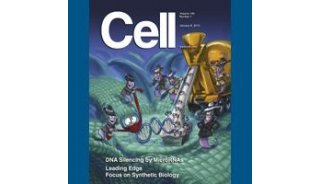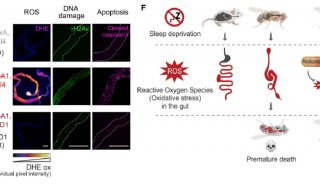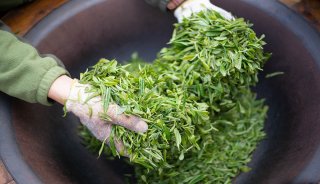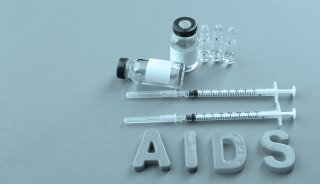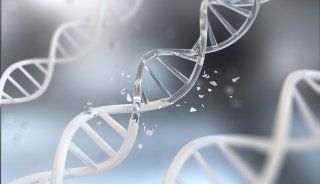Rodent Retinal Ganglion Cell Cultures
实验概要
Central neurons lose the ability for axonal regrowth during development and typically do not regenerate their axons following axotomy once they become mature unless given a growth-permissive environment, for example, a peripheral nerve graft. Retinal ganglion cells (RGCs) of the optic nerve represent a highly useful cell model for the study of neurotrophic factor responsiveness, although the presence of nonneuronal cells in the retina makes it difficult to interpret the direct effects of tested factors on RGCs. Cultures of purified RGCs thus represent an excellent tool for the study of optic nerve cell trophic responsiveness, in terms of both survival and axonal regeneration.
实验原理
Adult central nervous system (CNS) neurons typically do not regenerate their axons following axotomy, with the consequence that CNS injury results in permanent impairment. Studies have concluded that it is the CNS environment that is inhibitory to regenerative growth and that at least some of the adult CNS neurons do have an intrinsic ability to regenerate if given a permissive environment (1,2). The optic nerve is a readily accessible CNS tract that contains glial cells (oligodendrocytes, astrocytes, and microglia) and only one type of axon, those arising from retinal ganglion cells (RGCs). Neurotrophic factors applied intraocularly or to the axotomized optic nerves enhance the survival of RGCs in adult rodents during early stages after injury. Such factors include brain-derived neurotrophic factor (BDNF) (3,4), neutrophin-4/5 (5,6), nerve growth factor (7,8), ciliary neurotrophic factor (CNTF) (9,10), and fibroblast growth factor (11,12). Although RGCs can be studied as a flat-mounted preparation, as explants, or as dissociated retinal cultures, the presence of nonneuronal cells in the retina makes it difficult to interpret the direct effects of tested factors on RGCs. Cultures of purified RGCs thus represent an excellent tool for the study of optic nerve cell trophic responsiveness, in terms of both survival and axonal regeneration. Indeed, rat RGCs display age-dependent responsiveness to isolated neurotrophic factors, as well as Schwann cell–secreted factors (13). The protocol described here outlines a procedure for the purification of rat RGCs from a whole retina cell suspension (14). The proteolytic enzyme papain is used to dissociate rat retinal tissue (15–17). Purification is effected by the technique of antibody-mediated plate adhesion, “panning,” developed by Wysocki and Sato (18). This procedure yields a highly pure (>99%) population of ganglion cells, with yields ranging from 25% to 50%.
主要试剂
Reagents:
1. Earle’s balanced salt solution (EBSS) (Invitrogen).
2. EBSS containing sodium bicarbonate and phenol red but lacking Ca2 and Mg2 (CMF) (Invitrogen).
3. Dulbecco’s phosphate-buffered saline (D-PBS) (Invitrogen).
4. Minimal essential medium with Earle’s salts (MEM) (Invitrogen).
5. Dulbecco’s modified Eagle’s medium (DMEM), containing 4.5 g/L glucose, l-glutamine, and pyruvate (Invitrogen).
6. DMEM (American Type Culture Collection, ATCC).
7. Neurobasal medium (Invitrogen).
8. B27 supplement, 50×, with antioxidants (Invitrogen).
9. Fetal calf serum (FCS) (Invitrogen) (see Note 1).
10. Penicillin/streptomycin, 10,000 U/mL penicillin 10,000 μg/mL streptomycin (100× stock), sterile, for cell culture (Invitrogen).
11. l-Glutamine (200 mM stock), sterile, for cell culture (Invitrogen).
12. Sodium pyruvate (100 mM stock), sterile, for cell culture (Sigma).
13. Papain (Worthington (Lorne)).
14. DNase, type I (Worthington (Lorne)).
15. Trypsin, 2.5% solution, sterile, for cell culture (Sigma).
16. Trypsin (0.25%)-EDTA, sterile, for cell culture (Invitrogen).
17. Poly-d-lysine (MW 70,000–150,000), sterile, for cell culture (Sigma).
18. Merosin, human (Invitrogen).
19. Bovine serum albumin (BSA), essentially fatty acid and globulin-free (Sigma).
20. Ovomucoid (trypsin inhibitor from chicken egg white, type III-O, free of ovoinhibitor) (Sigma).
21. l-Cysteine hydrochloride (Sigma).
22. Insulin, from bovine pancreas (Sigma).
23. Transferrin, human, partially iron saturated, tested for cell culture (Sigma).
24. Progesterone (Sigma).
25. Putrescine (Sigma).
26. Sodium selenite (Sigma).
27. T3 (3,3′,5-triiodo-l-thyronine, sodium salt), cell culture tested (Sigma).
28. Thyroxine (T4) (Sigma).
29. Affinity-purified goat anti-mouse IgG IgM (H L) (Jackson ImmunoResearch).
30. Affinity-purified goat anti-mouse IgM, mu-chain specific (Jackson ImmunoResearch).
31. Anti-rat-macrophage antiserum (Accurate/Axell).
32. RAN-2 hybridoma TIB-119™ (ATCC).
33. Thy 1.1 IgM hybridoma TIB-103™ (name T11D7e2) (ATCC).
34. BDNF, human, recombinant (PeproTech).
35. CNTF, human, recombinant (PeproTech).
36. Glial cell line–derived neurotrophic factor, human, recombinant (GDNF) (PeproTech).
37. Basic fibroblast growth factor (PeproTech).
38. Forskolin (Sigma).
39. Trypan blue stain 0.4%, for cell culture (Invitrogen).
40. 3-(4,5-dimethylthiazol-2-yl)-2,5-diphenyl tetrazolium bromide (MTT) (Sigma).
41. Dimethyl sulfoxide, for cell culture (Sigma).
Solutions for Tissue Dissociation:
1. Papain solution. Immediately before the start of the dissection, prepare a papain solution by adding 165 units (for postnatal day 8 (P8) rats, for embryonic, much less is needed) of papain to 10 mL of EBSS (or P-PBS or MEM) in a 15-mL blue-top centrifuge tube. Next, add 100 μL of a 4 mg/mL solution of DNase. Dissolve the latter by placing the mixture, which is in a 15-mL centrifuge tube, in a test tube rack in a 37°C water bath. About 10 min before use, mix the papain solution with 2.4 mg of l-cysteine hydrochloride and pass through a 0.22-μM filter into a sterile scintillation vial or universal (Bijou) tube.
2. Ovomucoid solution. Dissolve 13 mg of ovomucoid and 13 mg of BSA in 13 mL of MEM, and then add 0.13 mL of a 4 mg/mL solution of DNase; adjust to pH 7.4 and filter-sterilize.
3. Trypsin (0.125%). Add 200 μL of a 2.5% trypsin stock to 4 mL of CMF. Be sure to prepare the trypsin aliquots immediately upon trypsin arrival; store at −20°C until use.
4. Trypsin inactivating solution. Combine 3 mL of FCS plus 10 mL DMEM.
5. Sato 100× stock solution. To 20 mL of Neurobasal medium, add the following (final concentrations in brackets): 200 mg transferrin (100 μg/mL), 200 mg BSA (100 μg/mL), 5 μL of stock progesterone solution (stock is 2.5 mg/100 μL ethanol) (60 ng/mL or 0.2 μM), 32 mg putrescine (16 μg/mL), 200 μL of stock sodium selenite (stock is 40 mg in 1 mL of 0.1 N NaOH plus 10 mL Neurobasal-A) (40 ng/mL), 10 μL of stock T3 (stock is 8 mg in 1 mL of 0.1 N NaOH, 30 ng/mL), and 10 μL of stock T4 (stock is 8 mg in 1 mL of 0.1 N NaOH, 40 ng/mL). Aliquot the above 100× stock solutions (200 μL) and store at −20°C. The ethanol stocks for progesterone, sodium selenite, T3, and T4 should be prepared fresh each time a new batch of 100× Sato medium is made.
Sato Serum-Free Culture Medium:
1. To 20 mL of Neurobasal medium (19), add the following: 200 μL Sato 100× stock solution, 400 μL 50× B27 supplement, 200 μL sodium pyruvate 100× stock, 200 μL glutamine 100× stock, 200 μL of 100× penicillin/streptomycin stock (stored at −20°C), and 20 μL N-acetyl cysteine 1,000× stock.
2. Next, add 200 μL of 100× insulin stock (stored at 4°C; stock must be prepared every 4–6 weeks—do not freeze). The 100× insulin stock (0.5 mg/mL) is prepared by adding 2 mg of insulin to 4 mL of tissue culture grade water containing 20 μL of 1 N HCl. Filter the stock through a 0.22-μm filter and store at 4°C.
3. Filter the above medium through a 0.22-μm filter. Before filtering the medium, filter about 5 mL of Neurobasal medium to rinse away traces of detergent in the filter. The quality of the filter matters—Millex-GV from Millipore is best. Falcon plastic is preferable, along with Monoject syringes.
4. Recommended trophic factors for mixed optic nerve cultures: insulin (5 μg/mL) plus CNTF (10 ng/mL). Do not filter the medium once the growth factors are added due to the risk of their sticking to the filter. In addition, forskolin (5 μM) can be included in the medium, as it promotes survival of mixed and purified cultures.
5. For purified RGCs, add BDNF (50 ng/mL), CNTF (10 ng/mL), and forskolin (5 μM final concentration; use a 1,000× stock prepared in dimethyl sulfoxide). Optional: Add basic fibroblast growth factor (10 ng/mL) for low-density culture.
主要设备
1. Stereo dissecting microscope with fiber optic light source.
2. Laminar flow cabinet for dissections.
3. Laminar flow biological safety cabinet (CL2).
4. Humidified, water-jacketed culture incubator at 37°C and 5% CO2/95% air.
5. Water bath set at 37°C.
6. Dissecting tools (Fine Science Tools).
7. Benchtop centrifuge to accommodate 15- and 50-mL tubes.
8. 15- and 50-mL polypropylene plastic centrifuge tubes (sterile).
9. 12-mL test tubes, sterile.
10. 6-mL flat bottom tubes (Bijou), sterile.
11. 1.5-mL Eppendorf tubes.
12. 10-cm ∅ sterile tissue culture dishes.
13. 6-, 10-, and 15-cm ∅ sterile Petri culture dishes.
14. #21- and #23-gauge hypodermic needles.
15. 5- and 10-mL syringes.
16. Nitex mesh, 20 μm (Tetko HC3-20).
17. 0.22- and 0.45-μm filters (Millipore).
18. Neubauer hemocytometer (Fisher Scientific).
19. 24- and 96-well tissue culture plates.
20. 24- and 96-well poly-d-lysine treated tissue culture plates (BD Biosciences).
实验步骤
1. Dissection
1) Normally, one to ten rats from a Sprague-Dawley or Long-Evans litter (Charles River) are used, typically between P8 and P10 (see Note 2).
2) Remove the retinas from the eye in situ. Sacrifice the animal by decapitation (following approved institutional protocols), and remove the skin overlying the eyes.
3) Pin back the head to a wax block and remove the anterior tissues of the eye with a #11 scalpel blade while the cornea is held with a pair of rat-tooth, microdissecting forceps. Remove the lens and vitreous humor with forceps. Then, gently lift the retina away with a small spatula.
4) Store the retinas at room temperature in EBSS containing calcium and magnesium, pH 7.4, until retinas are removed from all animals.
2. Tissue Dissociation
1) Upon completion of the dissection, remove the EBSS with a sterile Pasteur pipette and replace with 2 mL of the papain solution (see Notes 3 and 4).
2) Transfer the retinas to the vial by pouring, and place the vial in a test-tube rack in the water bath at 37°C. Every 10 min or so, gently swirl the retinas. The incubation time with the papain solution is 30 min (see Note 5).
3) Remove the vial from the water bath and transfer the retinas (by pouring) to a 15-mL centrifuge tube. Allow the retinas to settle, remove the papain solution with a pipette, and rinse the tissue gently with 3 mL of ovomucoid solution. Allow the tissue pieces to settle and remove the rinse solution (see Note 6).
4) Triturate the tissue with a 1-mL pipette in the ovomucoid solution. The following steps are repeated ten times. Add 1 mL of ovomucoid solution, gently pull the tissue up into a 1-mL pipette and expel. Centrifuge the tissue dissociate for a few seconds at 200 × g to remove pieces of tissue from the cell suspension, and collect the supernatant. The retinal tissue is further triturated by adding 1 mL of fresh ovomucoid solution, making one pass through the 1-mL plastic pipette, spinning down the undissociated tissue, and collecting the supernatant. After repeating this trituration procedure 6–10 times, the retinas should be completely broken up. A cell count at this point should show a cell yield of about 20 million cells/retina (see Note 7).
5) Centrifuge the resulting retinal cell suspension at 400 × g for 10 min to separate the retinal cells from the ovomucoid solution.
6) Discard the supernatant and resuspend cells in 10 mL of MEM containing 0.05% (w/v) BSA. The BSA serves to slow the cells’ settling time on the panning dishes. The cells are now ready for the panning step.
3. RGC Purification by Panning
1) Preparation of the Panning Dish
a. Incubate each of two 6-cm Petri dishes with 5 mL of 50 mM Trizma buffer, pH 9.5, with affinity-purified goat anti-mouse IgM, mu-chain specific (final concentration is 5–10 μg/mL) for 12 h at 4°C. To sterilize, pass the Tris solution through a filter into a sterile dish, and then add the azide-containing antibody directly to this; otherwise, much of the protein will be lost to the filter (see Notes 8 and 9).
b. Similarly, incubate two 15-cm Petri dishes with 15 mL of anti-rabbit IgG H L (5–10 μg/mL in Tris buffer, pH 9.5). Wash each dish three times with 8 mL of D-PBS (see Note 10).
c. Incubate the 10-cm dishes with 10 mL of Thy 1.1 IgM monoclonal supernatant for at least 1 h at room temperature. The 15-cm dishes are not incubated with any other antibodies.
d. Remove the supernatant and wash the plates three times with D-PBS.
e. In order to prevent nonspecific binding of cells to the panning dish, 5–15 mL of MEM with BSA (0.2%) is placed on each plate for at least 20 min; this solution should remain on the plate until the plate is needed.
2) Panning Procedure
a. Incubate the retinal suspension in anti-rat-macrophage antiserum (1:100 in MEM) for 20 min, centrifuge, resuspend in MEM, and incubate on a 15-cm anti-rabbit IgG panning plate at room temperature for 45 min total.
b. After 20 min, swirl the plate to ensure access of all cells to the surface of the plate. If cells from more than eight retinas are being panned, at the end of 45 min, transfer the nonadherent cells to another 15-cm anti-rabbit IgG panning plate for a further 30 min.
c. Remove the nonadherent cells (in suspension) and filter through a 20-μm Nitex mesh to remove small clumps of cells. Sterilize the mesh before use (UV exposure for a few minutes is sufficient), prewet the mesh on the bottom side, then form a cone with the filter on top of a test tube, and pass 1 mL of MEM through it before using a Pasteur pipette to transfer the cell suspension through the filter.
d. Clumps could occur either because they were not broken into single cells during trituration or because they were clumped by the antimacrophage antiserum. The latter type of clumping represents the single greatest impediment to final RGC purity as they can bring down unwanted contaminating cell types.
e. Transfer the cell suspension from the previous step to the Thy1.1 panning dishes. The use of two 10-cm dishes improves the final yield, although the use of more than this is not helpful. Leave the cell suspension on the dish(es) for 1 h while swirling every 20 min.
f. Wash the dishes at least eight times with 6 mL of D-PBS (discard after each wash) and swirl rather vigorously each wash to dislodge nonadherent cells. Monitor the progress of nonadherent cell removal by observing the dishes under a light microscope. Washing is considered complete when only adherent cells remain on the dish.
3) Removing Adherent Cells from the Panning Dish
a. Incubate adherent cells on the panning dish with 0.125% trypsin solution for 10 min in a 37°C CO2 incubator.
b. Remove the dish from the incubator and squirt off the cells with a 1-mL pipetman while they are still in the trypsin solution. Mark one point on the outside of the dish with marker. Squirt from this point, once around the dish, by squirting from the peripheral edge toward the center, rotate the dish, squirt again, etc., until the entire surface area has been covered once. Keep to a minimum the amount of squirting necessary to remove the cells (see Note 11).
c. Transfer the cell suspension from the dish to a 15-mL centrifuge tube. Add 1 mL of the trypsin inactivating solution to these cells and add another 4 mL to the dish. Again squirt the dish. Check quickly under the microscope to make sure most of the cells have been released (if not, this probably indicates that the trypsin has lost activity).
d. Collect this 4 mL and transfer to the centrifuge tube (total volume: 9 mL). Gently invert the tube several times to mix the cells and remove a 100 μL aliquot for counting. Pour the remainder of the trypsin inactivating solution into the tube with the cells to top up the tube. Centrifuge at 200 × g for 5 min to collect the cells.
e. Resuspend the cells in Sato medium with growth factors for purified RGCs, mix a 20 μL aliquot with an equal volume of 0.4% trypan blue, count, and plate. Expected yield: 40,000 RGCs viable (trypan blue–excluding cells) per P8 rat pup (see Notes 12–15).
f. Culture the cells on a poly-d-lysine/merosin substrate. Dissolve a 5-mg bottle of poly-d-lysine in 5 mL of 0.15 M borate buffer, pH 8.4. Add 200 μL of this poly-d-lysine stock (1 mg/mL) to 20 mL of tissue culture grade sterile water. Use 0.2 mL poly-d-lysine per cm2 surface area. Incubate with poly-d-lysine at room temperature (20–22°C) for 60 min. Merosin coating is done after rinsing off excess poly-d-lysine: Add a 2 μg/mL solution in Neurobasal medium and incubate at 37°C for several hours to overnight (if overnight, add penicillin/streptomycin) in a 5% CO2 incubator. The cells can be plated at 5,000 cells per well of a 96-well plate (high density) or at low density on 6-cm tissue culture dishes, as desired.
4. Modifications for Purifying Mouse P8 RGCs Rather than Rat
1) Use CD1 mice or other Thy1.2-positive strains, between 8 and 10 days postnatal age.
2) Instead of using an IgM Thy1.1 antibody, use an IgM Thy 1.2 antibody for the final panning dish. For example, the F7D5 Thy1.2 antibody, which is a mouse monoclonal (Accurate Chemical Co., Cat No. MAS 731).
3) Add 5 mL of 0.2% BSA in D-PBS containing F7D5 ascites fluid at a dilution of 1:1,000 or 1:500.
4) All other steps remain the same.
5. Modifications for Purifying Embryonic Day 18 (E18) RGCs Rather than P8 RGCs
1) Dissection
a. Decapitate embryos with a pair of #5 microdissecting forceps.
b. Remove skins overlying the eyes with the same forceps.
c. Make an insertion on the cornea with a pair of #55 microdissecting forceps.
d. Peel off the cornea with another pair of #55 forceps to expose the lens.
e. Remove the lens with the #55 forceps.
f. Lift away the retina with a small spatula.
2) Dissociation
a. Use 50 U of papain in 10 mL of D-PBS (for 30 min, same length of time as for P8).
b. The yield of purified E18 RGCs will be substantially less than for P8 because they have not all been generated yet and because they express less Thy1.
3) Culture
The same Neurobasal serum-free Sato medium, use of B27 at 1:50 is key, as well as BDNF, which will only save about a quarter of the cells in any case. The E18 RGCs do not respond to the other trophic factors.
6. MTT Survival Assay
1) The MTT assay is frequently used to quantify neuronal cell survival. MTT reacts with mitochondrial dehydrogenases to produce a blue formazan product in living cells, but not in dying cells or their lytic debris (20, 21). Because of the low density of RGC cultures, MTT-labeled cells are counted, rather than dissolving the reaction product in dimethyl sulfoxide and reading absorbance spectrophotometrically.
2) An MTT stock solution is prepared by dissolving MTT in D-PBS at 5 mg/mL. Sterilize by passage through a 0.22-μm filter. The stock solution can be stored at −20°C for up to 6 months.
3) Add 10 μL of the MTT stock to each 100-μL well of a 96-well plate. Return the plate to the 37°C incubator for at least 1 h (maximum 2 h). Viable cells with active mitochondria cleave the tetrazolium ring into a visible dark blue/black formazan reaction product (see Note 16).
4) Count the percentage of viable cells in each well by counting at least 200 cells per well. Ideally, at least three wells per test condition should be counted. Use an eyepiece reticle with a counting grid. Cells must be counted immediately after the MTT incubation to avoid the formation of large crystals of MTT and toxicity of MTT to the cells.
注意事项
1. Heat inactivation of fetal calf serum is recommended to destroy heat-labile complement. Thaw the bottle of serum in advance, using a 37°C water bath. Next, immerse the serum bottle in the water bath after reequilibrating to 56°C and leave for 30 min. Swirl the bottle occasionally to ensure proper mixing. Allow the serum to cool to room temperature, aliquot into 50-mL tubes, and store at −20°C.
2. The dissociation procedure works on any age retina (E18–P12); purification using rats older than P12 has not been verified using this protocol (but see ref. (13)).
3. The papain should be obtained from Worthington.
4. Do not use L15 as it inhibits papain.
5. During the dissociation procedure, never expose the cells to glutamate, aspartate, or glutamine nor allow cells to be cooled lower below room temperature to avoid toxic effects on ganglion cells.
6. Ovomucoid itself does not inhibit the papain but probably a contaminant; the source of the ovomucoid matters.
7. In step 4 of the tissue dissociation, tissue pieces may be allowed to settle by gravity rather than using centrifugation.
8. Dishes used for panning must be Petri plastic, not tissue culture plastic treated. Falcon is a good brand, and others may work but should be tested first.
9. The time of the entire panning procedure can be significantly shortened by decreasing the time of all panning plate cell incubations by half without much loss in yield or purity.
10. When solutions are removed from the panning dishes during washes, they must be instantly replaced with fresh solution so that cells do not dry out.
11. Do not wash too vigorously, or you will wash off the RGCs.
12. Do not resuspend the final cell pellet in DMEM, because there is no BSA—you may lose cells on the wall of the pipette tip from nonspecific sticking.
13. DMEM should not be used, as the osmolarity is 335. Combined with the B27 supplement and other additions indicated, the final osmolarity of 360 becomes cytotoxic. Neurobasal osmolarity is 225, becomes about 260 with the various supplements/additions.
14. The B27 supplement seems to go off quickly once opened; it is recommended to buy the small size and replace the bottle of medium frequently.
15. Do not use F12 culture medium or combination with F12, as F12 contains amounts of iron which are cytotoxic for RGCs.
16. MTT is toxic. Handle with gloves; do not inhale, touch, or swallow.
17. For panning, it is preferable to use antibodies that recognize surface antigens that are not cleaved by the papain or trypsin used to prepare the cell suspension. For this reason, antibodies to glycolipids (e.g., galactocerebroside) or gangliosides (e.g., A2B5) are ideal.
18. In some cases, when the panning antigen is a protein, the enzymes used do not completely cleave the antigen of interest, and so enzymes can still be used (e.g., RAN-2 and Thy1). In many cases, however, the enzymes completely destroy the antigen. It is still possible to pan using antibodies to this antigen, if the cell suspension is allowed to recover at 37°C for 1 h.
19. Always pan at room temperature, never at 37°C. The higher temperature allows activation of cell adhesion mechanisms and can result in adherence of contaminating cell types.
20. Always use at least two panning dishes; the first should be coated with an antibody to deplete an unwanted contaminating cell type or with an irrelevant antibody in order to make sure that microglia/macrophages are depleted (about 6% of cells in the developing optic nerve). They will not be successfully eliminated by panning for them on a dish that is not antibody coated.
21. An alternative for removing microglia/macrophages is to just coat the first dish with the lectin BSLI (Bandeiraea simplicifolia lectin I; this lectin also binds to brain endothelial cells).
22. When coating panning dishes, the first antibody (the goat anti-rabbit or anti-mouse) should always be affinity purified. Because unrelated proteins like BSA will occupy most binding sites on the Petri dish, monoclonal supernatants (which generally contain 10% FCS) cannot be put straight onto the dish unless you precoat with an affinity-purified anti-mouse antibody. However, an affinity-purified antibody (or a lectin) to the cell surface antigen of interest can be put onto the dish directly.
23. For panning, the second antibody (the one that actually binds to the cell surface antigen of interest) should be a monoclonal supernatant whenever possible. The reason for this is that the only mouse antibody type in a supernatant is the one of interest. Using a polyclonal antiserum risks that there will be many irrelevant antibodies to occupy (anti-rabbit) sites on the panning dish. Likewise, ascites fluid may contain numerous host-derived antibodies and will also occupy (anti-mouse) sites on the panning dish. In some cases, ascites from IgM-secreting hybridoma cells can be used if an anti-mouse IgM, mu-chain-specific antibody is used to first coat the dish, as there do not seem to be many irrelevant IgM antibodies in ascites.
24. If there is no alternative and a polyclonal antiserum or ascites must be used, then it is still possible to use this antibody for panning. In this case, however, the panning dish must be coated with only one antibody (the anti-rabbit or anti-mouse antibody), and the cell suspension should be incubated with the rabbit or mouse antibody directly. In this way, the wanted antibodies will bind to the cell surface and the unwanted ones can be eliminated by spinning the cell suspension down and discarding the supernatant (and preferably washing the suspension one more time).
25. The most delicate step in panning is removing the tightly adhering purified cells from the panning dish. A saturating amount of antibody can be utilized on the first panning dishes used for depletion of contaminants from the cell suspension; however, the concentration of antibody on the final panning dish is crucial and must be titrated carefully. Cells that are too tightly bound will be difficult to release viably, while if too loosely bound, they will wash off (= poor yield). This is particularly crucial if the antigen is not destroyed by trypsin, as antibodies are not well cleaved by trypsin. In general, an optimal concentration of antibody causes about half of the adherent cells to be phase dark and flat (tightly adherent) and the other half to be phase bright and roundish (less adherent). This can be determined by a titration experiment in which the yield of viable cells is optimized; typically, supernatants on the final dish are diluted 1:20 and ascites about 1:2,000.
26. In general, if the antigen used to purify cells on the final panning dish is not trypsin sensitive, then the antibody used needs to be an IgM rather than an IgG. The IgG-bound cells are difficult to release while retaining viability, perhaps because of its high affinity for the antigen. If the only antibody available is an IgG and the antigen is not trypsin sensitive, it is still possible to purify the cells. In this case, the final dish must be coated with either protein A or protein G (or a mixture of both) rather than an anti-mouse IgG antibody. Protein A and protein G are easily cleaved by trypsin, and the cells are easily released.
-
项目成果
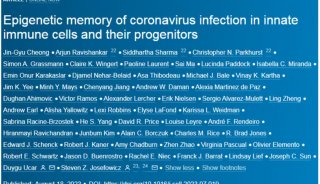
-
焦点事件
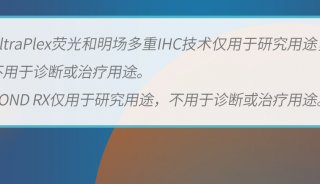
-
科技前沿
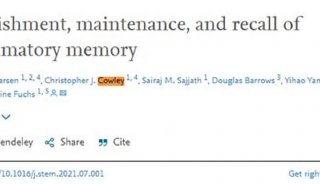
-
焦点事件
